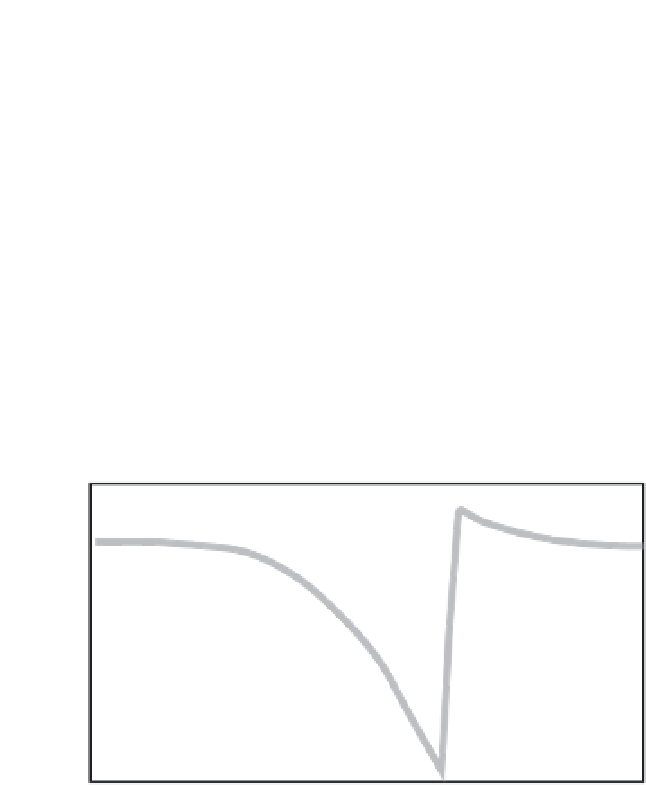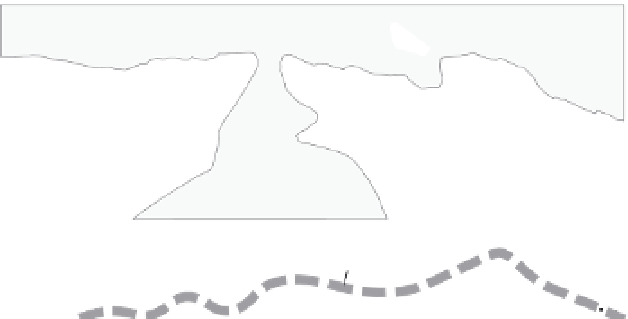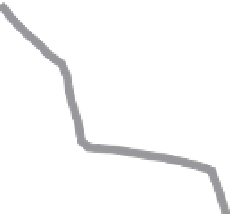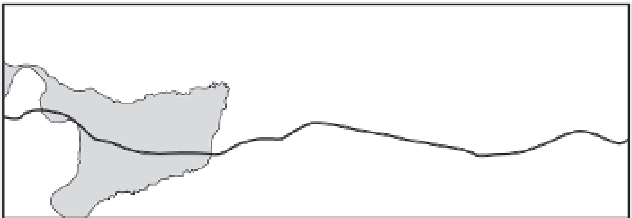Geology Reference
In-Depth Information
Active Normal Faulting in Idaho
River
Borah
Peak
0
5
km
Bedrock
Basin
Normal
fault
A
3
2
1
0
average
offset
NW
SE
B
0
5
10
15
20
25
30
35
Distance parallel to the fault (km)
400
0
distal uplift
co-seismic
footwall uplift
Fig. 4.25
Normal faulting in the Lost
River Range, Idaho.
A. Map of the Lost River Range and the
surface trace of the 1983 Borah Peak
rupture. Location of leveling-line survey
across the footwall and hanging wall is
shown. B. Vertical surface displacements
along the fault trace at the toe of the Lost
River Range. C. Surveyed and modeled
coseismic displacement resulting from
the 1983 Borah Peak earthquake across a
zone at least 35 km wide. Note the
asymmetry of displacement across the
fault, such that the hanging wall is
down-dropped 4-5 times more than the
footwall is uplifted. D. Schematic
geological cross-section perpendicular to
the fault across the Borah Peak footwall
and the Thousand Springs Valley
half-graben. Faulted 4 Ma volcanic rocks
provide a marker in the footwall and
hanging wall. E. Main 1983 shock and
aftershocks define the rupture plane,
which dips about 45
°
to the southwest.
Modified after Stein
et al.
(1988).
-400
co-seismic
hangingwall
subsidence
-800
Data
Model
-1200
C
4
SW
NE
Borah Pk.
Thousand Springs Valley
2
hangingwall
marker unit
0
-2
D
vert. = 2 x horiz.
projection of aftershocks
on to transect
modeled
fault plane
5
10
main shock
15
vertical = horizontal
E
20
0
10
-30
-20
-10
Distance normal to the fault (km)
the tendency for rates on individual faults to
become steadier with time suggests that the
entire rift acts as an integrated fault system.
Deformation caused by two recent earth-
quakes helps us visualize aspects of the actual
vertical displacements and spatial variations in
coseismic strain on active normal faults. The
1983
M
=
7.0 Borah Peak earthquake illustrates
the typical asymmetry of footwall uplift and
hanging-wall subsidence: the footwall rose a
maximum of about 30 cm, whereas the hang-
ing wall dropped about 130 cm (Fig. 4.25C).
Following an earthquake such as this one,
interseismic strain (Stein
et al.
, 1988) and





















































































































































































































































































































































